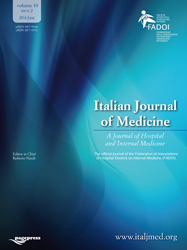Maximizing the success of percutaneous nephrolithotomy under spinal anesthesia by postoperative bleeding and fever prediction using demographic and intraoperative risk factors
All claims expressed in this article are solely those of the authors and do not necessarily represent those of their affiliated organizations, or those of the publisher, the editors and the reviewers. Any product that may be evaluated in this article or claim that may be made by its manufacturer is not guaranteed or endorsed by the publisher.
Authors
The 4S percutaneous nephrolithotomy (PCNL) procedure, involving PCNL under spinal anesthesia in a supine position and with sonographic-guided single-step puncture and dilatation for kidney stone removal, faces several complications that can hinder its success. This study, conducted over 4 years (2019-2023) among 653 Pakistani patients with renal stones and good renal function, aimed to identify complications based on predictors of postoperative bleeding and fever. Patients with irreversible coagulopathy or congenital kidney anomalies were excluded. Risk factors documented included gender, age, stone size, surgery time, puncture type, and calyx position. Data analysis using Jeffreys’s Amazing Statistics Program 0.19.3 through binary logistic regression revealed that surgery time and puncture type significantly predicted both bleeding [odds ratio (OR)=1.1 (1.06-1.2) and OR=11.2 (2.8-43.3), respectively] and fever [OR=1.07 (1.03-1.12) and OR=4.8 (1.2-18.6), respectively]. The models for predicting bleeding and fever were ~97% accurate and ~100% specific, with area under the receiver operating characteristic curve values of 0.875 and 0.876, respectively. These findings indicate that surgery time and puncture type are key predictors of postoperative complications following 4S PCNL. This insight can guide critical intensive care unit arrangements to enhance the effectiveness of 4S PCNL and improve patient outcomes.
How to Cite

This work is licensed under a Creative Commons Attribution-NonCommercial 4.0 International License.
PAGEPress has chosen to apply the Creative Commons Attribution NonCommercial 4.0 International License (CC BY-NC 4.0) to all manuscripts to be published.






